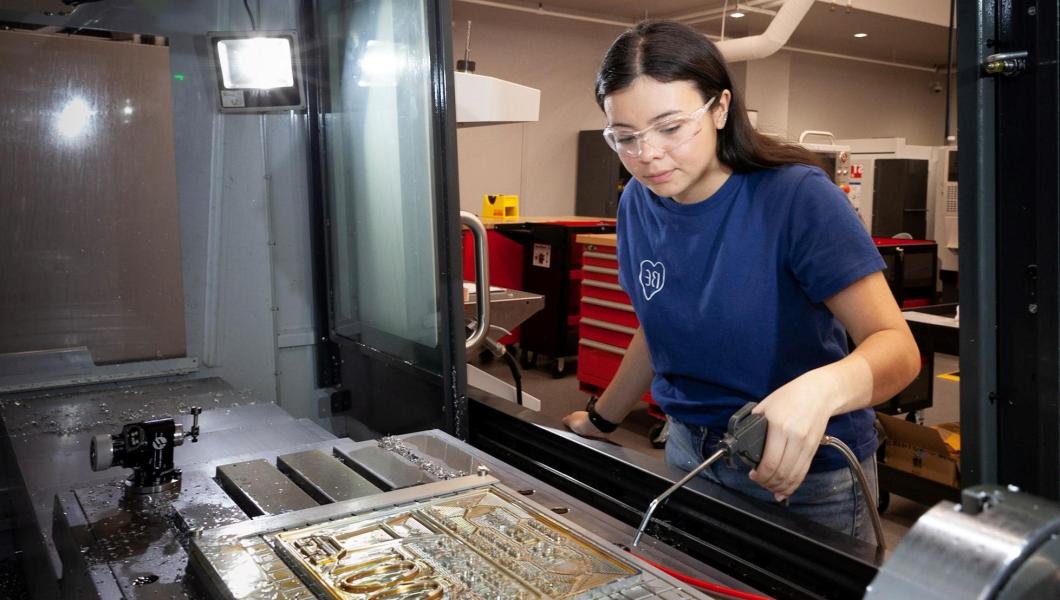NJIT Students Take No. 2 Spot in Health Care Competition

Who better to develop ways to encourage young people to watch after their health than other young people? Such was the reasoning behind the first-ever Horizon BlueCross BlueShield of New Jersey’s (BCBSNJ) Health Care Transformation Challenge, conducted last year.
The contest asked undergraduate students attending a New Jersey higher-education institution to submit innovative marketing or technology ideas tied to one of three health care-related activities: shopping for health plans, getting preventive care or taking advantage of wellness benefits. Sixteen teams of two to four students from universities and colleges throughout the Garden State vied for a total of more than $15,000 in prize money, with proposals aimed at helping to make health care more accessible, understandable and convenient to their generation — an important endeavor considering that most millennials do not schedule physician visits, according to a ZocDoc survey.
“It’s important to us that we stay on the cutting edge by engaging with younger folks who understand the importance of health care and want to help get the word out to millennials who may not know enough about their options,” said Christopher M. Lepre, Horizon BCBSNJ senior vice president, marketing business units, and a competition judge, in a press release.
Heeding the call, and placing second in the technology track, were NJIT students Kaila Trawitzki and Mert Nacir. The electrical and computer engineering technology senior from Yorktown, Va., and chemical engineering junior from Wayne, N.J., respectively — both first-generation college students — designed a device that delivers mechanical vibrations to help strengthen bones and prevent osteoporosis.
The first development under their anticipated startup company GoodVibe Medical, the device would be worn around the arms and legs and provide whole body vibration (WBV), a form of biomechanical stimulation that has been used to build bone density in astronauts and decrease muscle tension and restore motion in people with cerebral palsy. Additionally, studies have shown high-intensity vibration to increase both lumbar and femoral neck density and lumbar spine density in postmenopausal women with osteoporosis.
“We are focused on targeted biomechanical stimulation applied directly to muscles or tendons,” noted Trawitzki, also an Albert Dorman Honors College student. “With ample repeated usage, bone mass loss can potentially be prevented, especially in younger users.”

Her and Nacir’s portable, ergonomic, user-friendly personal appliance — inspired by Trawitzki’s NASA-internship mentor who has cerebral palsy — will be powered by Arduino’s open-source electronic prototyping platform and incorporate an electromechanical vibrator, as well as electrodes and a sensor for continuous electromyographic monitoring of muscle and bone mass. The device’s design also includes a built-in customer service app and a mechanism to send results to doctor’s offices.
“Those between ages 18 and 34 are the most likely to be interested in telehealth, so a device like this would appeal to that age range,” Nacir pointed out.
The duo had already been collaborating on GoodVibe Medical for NJIT’s National Science Foundation I-Corps program, which funds projects toward commercialization, when Trawitzki was searching for other grants and discovered Horizon BCBSNJ’s Health Care Transformation Challenge. Their innovation and diligence brought them to the final round of competition, where this past November they pitched their device to a panel of marketing and technology judges and received a $2,500 cash prize.
“Our next steps are to begin creating the physical prototype, as well as applying to more grant [programs] and competitions,” said Trawitzki, who plans on attending graduate school to study biomedical engineering. “We are ordering the supplies via the NJIT I-Corps grant money, and then setting aside some time to actually create the device via Arduino. We have been doing background research on materials and specifications.”
As for looking back on their tremendous achievement, Nacir, who will pursue a career in either pharmaceuticals or biotechnology, remarked, “Placing in the top three felt validating more than anything. With any new venture, people always have doubts about whether or not what they are doing has any real value or if it is a waste of time. But when we heard the feedback from the judging panel and heard that we received second place, I felt that without a doubt we were doing something meaningful.”

